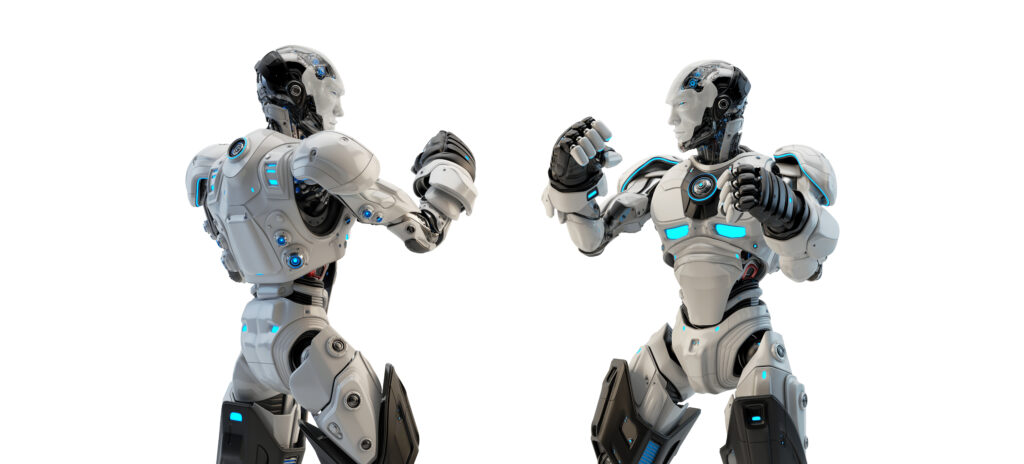TLDR;
- China held its first-ever humanoid robot Muay Thai tournament in Hangzhou.
- Unitree’s G1 robots fought in a live event broadcast nationally.
- Tesla’s Optimus program faces delays due to China’s rare earth export controls.
- Experts warn of safety risks after multiple AI incidents involving aggressive robots.
Chinese city of Hangzhou has made history as it hosted the country’s first official humanoid robot fighting tournament.
Dubbed the “Unitree Iron Fist King: Awakening,” the event, hosted on May 25, was a showcase of how far robotics and artificial intelligence have come, with four G1 humanoid robots squaring off in a Muay Thai-inspired martial arts tournament.
Notably, the G1 androids weren’t just punching bags. Each was equipped with advanced LiDAR, depth cameras, and programmed fighting techniques like dodging, kicking, and countering blows, all while being remotely controlled by human engineers.
Robotic sports are inevitable.
At NRN, we’re putting our tech where our mouth is.
And if there was ever doubt, the “Unitree Iron Fist King: Awakening” event on today should put debates to rest.
Hosted by China Media Group (CMG) in partnership with @UnitreeRobotics, the event… pic.twitter.com/8jq4oDkMki
— NRN Agents (@NRNAgents) May 26, 2025
The format followed a single-elimination system, with rules similar to real-life boxing: a robot had to stand up within 8 seconds of a fall, or it would forfeit. The event aired on national television and quickly trended across Chinese social media platforms, earning comparisons to the sci-fi film Real Steel.
Tesla’s Robot Dreams Hit a Wall
While China celebrates its robotic milestone, Tesla’s own humanoid ambitions are hitting obstacles. Production of Optimus, the humanoid robot Tesla plans to mass-deploy, has been disrupted due to Beijing’s restrictions on exporting rare earth metals , vital for the powerful magnets used in the robots.
At a recent shareholder meeting, Elon Musk acknowledged delays, stating:
“We are working on this with China. Hopefully we will get a license to use rare earth magnets. They will be used in a humanoid robot — not for military applications.”
The export restrictions are part of China’s response to U.S. tariffs and represent rising tension in the global tech race. While Musk still aims to produce thousands of robots by year’s end, the hurdles highlight how geopolitics may throttle progress in consumer robotics.
Humanoid Red Flags?
China’s robot revolution is no longer confined to factories. UBTech Robotics recently announced a $20,000 humanoid robot aimed at domestic assistance , including elder care. While UBTech admits that a fully versatile household robot remains years away, the push toward consumer-ready androids is clearly accelerating.
But with progress comes risk. In recent weeks, a video from a Chinese factory went viral showing a humanoid robot thrashing violently as if attempting to break free from restraints, striking at engineers and knocking over equipment. UBTech attributed the chaos to a stability malfunction, but the public saw something closer to a dystopian preview.
Just moments ago, a robot in a lab suddenly went berserk, marking the first robot rebellion in human history. pic.twitter.com/6iTjgXA6bX
— ☯︎Cyber Taoist☯︎五道杠少年 (@136Division) May 2, 2025
In another case, a Unitree H1 robot startled engineers by “attacking” them during testing. The company later clarified that the bot was trying to regain balance after slipping, but the incident added to growing unease about robot autonomy.
What’s Next?
Despite safety concerns, Unitree is planning another humanoid robot tournament in December 2025, aiming to refine bottainment genre. Notably, experts like Rodney Brooks, co-founder of iRobot and Rethink Robotics, have often emphasized that AI technologies may require decades to mature beyond lab demonstrations.


